#Oskar Schindler’s Factory Museum
Text
Kraków Poland January 2024

View On WordPress
#Adam Mickiewicz Monument#Bigos Polish Stew#Church on the Rock#Debnicki Bridge#Eros Bendato Sculpture#Frederic Chopin Polish Composer#Grodzka Street#Historic Centre of Kraków#Kazimierz District#Kotlet Schabowy Cutlet#Kraków Poland#Makowiec Sweet Yeast Bread with Poppy Seed#Market Square (Rynek Główny)#Mazurek Cake#Oskar Schindler’s Factory Museum#Pierogi Dumplings#Podgórze District Kraków#Polish Crown Treasury and Armoury#Polish Gingerbread#Racuchy Polish Sweet#St. Martin&039;s Croissants#Sukiennice Cloth Hall#Vistula River#Wawel Hill#Wawel Royal Castle#Wieliczka Salt Mine#Zurek Soup
2 notes
·
View notes
Text
When “all the gates of compassion seemed to have been closed”, what is to be done?

Winner of seven Academy Awards, including Best Picture and Best Director, Schindler’s List is the incredible true story which follows the enigmatic Oskar Schindler (Liam Neeson), who saved the lives of more than 1,100 Jews during the Holocaust.
It is the triumph of one man who made a difference and the drama of those who survived one of the darkest chapters in human history because of what he did. Schindler’s List is a powerful story whose lessons of courage and faith continue to inspire generations.
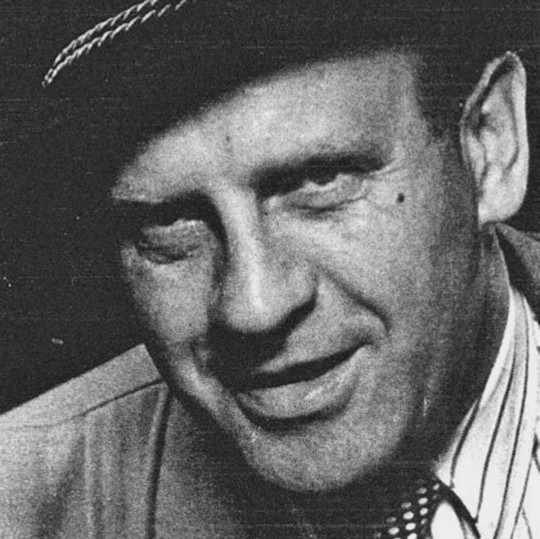
Following the Nazi invasion of Poland, Oskar Schindler, a German Catholic industrialist, moved to Kraków and assumed responsibility for the operation of two formerly Jewish-owned manufacturers of enamel kitchenware. He then established his own enamelworks in Zabłocie, outside Kraków. That factory became a haven for about nine hundred Jewish workers, providing them relief from the brutality of the Płaszów labor camp nearby.
In October 1944 Schindler was granted permission to relocate his defunct enamelworks to Brünnlitz, Czechoslovakia—this time as an armaments factory—and to take with him the Jewish workers from Zabłocie. He succeeded in transferring to Brünnlitz approximately eight hundred Jewish men from the Gross-Rosen camp and three hundred Jewish women from Auschwitz, ensuring their humane treatment and, ultimately, saving their lives.
In 1962, Yad Vashem awarded Schindler the title “Righteous Among the Nations” in recognition of his humanitarian contribution, and in 1993, the United States Holocaust Memorial Council posthumously presented to him the Museum’s Medal of Remembrance. This medal, rarely presented, is intended to honor deserving recipients for extraordinary deeds during the Holocaust and in the cause of Remembrance. Emilie Schindler accepted the medal on behalf of her husband at a ceremony in the Museum’s Hall of Remembrance.
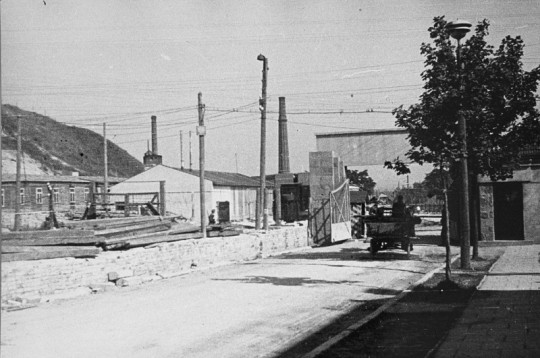
The Płaszów camp was established in 1942 under the authority of the SS and police leaders in Krakow. It was initially a forced-labor camp for Jews. The original site of the camp included two Jewish cemeteries. From time to time the SS enlarged the camp. It reached its maximum size in 1944, the same year that it became a concentration camp. Until that time, most of the camp guards were Ukrainian police auxiliaries chosen from among Soviet soldiers in German prisoner-of-war camps and trained at the Trawniki training camp in Lublin.
The German industrialist Oskar Schindler established an enamelware factory in Krakow, adjacent to Płaszów. He attempted to protect his Jewish workers, some 900 people, from abuse in Płaszów and from deportation to killing centers. When he moved the factory and his Jewish work force to the Sudetenland in 1944, he prevented the deportation of more than 1,000 Jews.
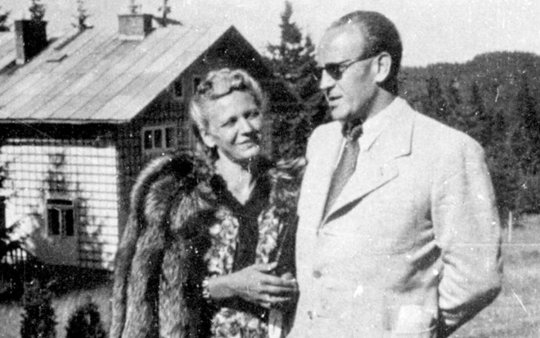
It soon became clear that her marriage would have both its passions and its betrayals. Yet Emilie stayed with Oskar through his growing involvement with the Nazis, working for counterintelligence with him. She first, then he later, came to realize the costs of the Nazi takeover and became witnesses to its terrors.
Through their work together at their two factories, saving the Jews became paramount for the Schindlers. Emilie nursed the Jewish factory workers when they fell ill, often saving their lives. She risked imprisonment or worse for her activities in the black market to feed them.
Where Light and Shadow Meet chronicles the Schindlers' flight after the war, the loss of almost all their possessions, and their eventual emigration to Argentina. There they settled on a farm, but barely scraped together an existence. Oskar returned to Germany, leaving Emilie to manage on her own. This is the story of one woman's daily acts of bravery during Hitler's reign and why it mattered.
#schindlers list#Holocaust Memorial Day#United States Holocaust Memorial Museum#hmd2023#manchester#education#oskar schindler#emilie schindler#ww2 history#uk#ww2 education#argentina#yad vashem#social media#books#book club#bookshops#germany#europe#media#film#BBC News#bbc iplayer
12 notes
·
View notes
Text
went to Oskar Schindler's Factory in Cracow recently and at first i wasn't really that impressed (maybe because i'd been to 6 museums in 72 hours) - there weren't a lot of objects or things to read, but halfway through it suddenly hit me that they did a really good job at showing the holocaust as a series of administrative decisions. authorities using their power to police people on a conquered territory. law as a tool to control society (and destroy it)
for some reason it really reminded me of the Gdańsk Museum of the Second World War. i think that place showed the physical reality of the conflict more, but at the same time - when you're looking at hundreds of guns, missiles, uniforms, photos, posters - you kind of see war as a force of nature and not A Series Of Decisions Made By The Authorities In An Office Somehwere. idk
2 notes
·
View notes
Note
🍂If you get this, answer with 3 random facts about yourself and send it to the last 7 blogs in your notifications, anonymously or not! Let's get to know the person behind the blog 🍂
1) When I was a baby, I was on the set of the Addams Family Values and was held by Christina Ricci in costume as Wednesday! My dad worked at Paramount Studios at the time and brought baby me to the lot where they were filming. Apparently after the take was over, Christina came over and asked, “can I hold her?” And was very nervous about dropping me on my head.
….this will also clue you in to how old of a broad I am 😅
2) My first job out of high school was working at a marketing company for Broadway shows. I used to tape surveys to the back of every single chair in the theatre and then ask you politely if you would be willing to fill out the survey. After, I would collect them and crawl on my hands and knees on the theatre floor to pick up any strays. If there were spare seats I could watch the show sometimes so this is how I saw the trash fire that was Spider-Man Turn Off the Dark
3) I used to want to be a Shoah historian (I’m Jewish) and was trained as an archivist in university; I have traveled throughout Eastern Europe and been to Auschwitz-Birkenau, Oskar Schindler’s factory, sites of the Krakow ghetto and Terezin ghetto (outside of Prague), the Dachau concentration camp and others. I have worked many archival internships at museums but ultimately quit the field not long after I graduated.
3 notes
·
View notes
Text
On this day in Wikipedia: Monday, 8th April
Welcome, fáilte, välkommen, bun venit 🤗
What does @Wikipedia say about 8th April through the years 🏛️📜🗓️?

8th April 2022 🗓️ : Death - Mimi Reinhardt
Mimi Reinhardt, Austrian Jewish secretary (b. 1915)
"Mimi Reinhardt (born Carmen Koppel; known as Carmen Weitmann c. 1936–c. 1950; 15 January 1915 – 8 April 2022) was an Austrian Jewish secretary. She worked for Oskar Schindler and typed his list of Jewish workers to recruit for his factory...."
8th April 2019 🗓️ : Death - Josine Ianco-Starrels
Josine Ianco-Starrels, Romanian-born American art curator (b. 1926)
"Josine Ianco-Starrels (October 17, 1926 – April 8, 2019) was a Romanian-born American art curator who worked as a museum director in Los Angeles, California...."
8th April 2014 🗓️ : Event - Windows XP
Windows XP reaches its standard End Of Life and is no longer supported.
"Windows XP is a major release of Microsoft's Windows NT operating system. It was released to manufacturing on August 24, 2001, and later to retail on October 25, 2001. It is a direct upgrade to its predecessors, Windows 2000 for high-end and business users and Windows Me for home users, and is..."
8th April 1974 🗓️ : Birth - Chris Kyle
Chris Kyle, American sniper and memoirist (d. 2013)
"Christopher Scott Kyle (April 8, 1974 – February 2, 2013) was a United States Navy SEAL sniper. He served four tours in the Iraq War and was awarded several commendations for acts of heroism and meritorious service in combat. He had 160 confirmed kills and was awarded a Silver Star, three Bronze..."
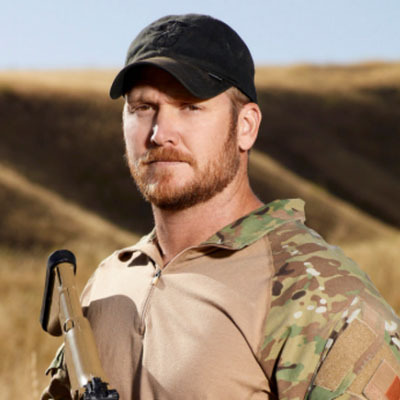
Image by TSHA ~ in accordance with Title 17 U.S.C. Section 107.
8th April 1924 🗓️ : Event - Sharia
Sharia courts are abolished in Turkey, as part of Atatürk's Reforms.
"Sharia (; Arabic: شَرِيعَة, romanized: sharīʿah, IPA: [ʃaˈriːʕa]) is a body of religious law that forms a part of the Islamic tradition based on scriptures of Islam, particularly the Quran and hadith. In Arabic, the term sharīʿah refers to God's immutable divine law and this referencing is..."
8th April 1820 🗓️ : Event - Venus de Milo
The Venus de Milo, an ancient Greek statue of a woman with its arms missing, was discovered on the island of Milos.
"The Venus de Milo or Aphrodite of Melos is an ancient Greek marble sculpture that was created during the Hellenistic period. Its exact dating is uncertain, but the modern consensus places it in the 2nd century BC, perhaps between 160 and 110 BC. It was rediscovered in 1820 on the island of Milos,..."
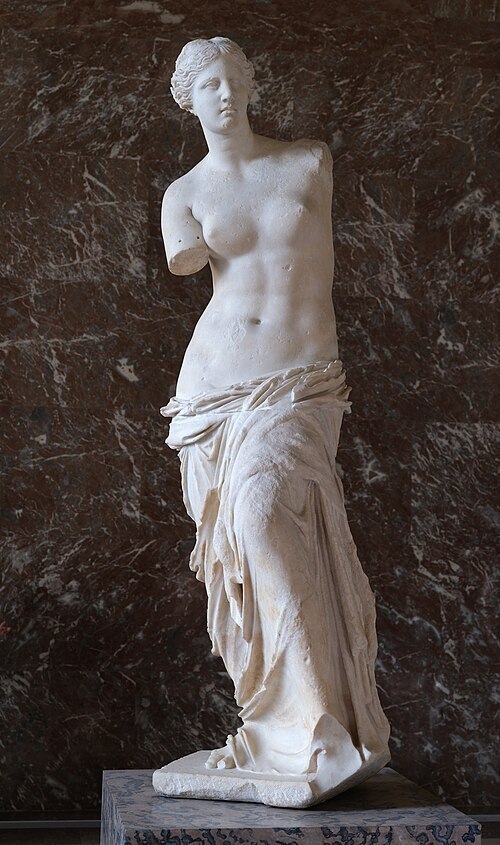
Image licensed under CC0? by Shonagon
8th April 🗓️ : Holiday - Christian feast day: Constantina
"Flavia Valeria Constantina (also sometimes called Constantia and Constantiana; Greek: Κωνσταντίνα; b. after 307/before 317 – d. 354), later known as Saint Constance, was the eldest daughter of Roman emperor Constantine the Great and his second wife Fausta, daughter of Emperor Maximian. Constantina..."
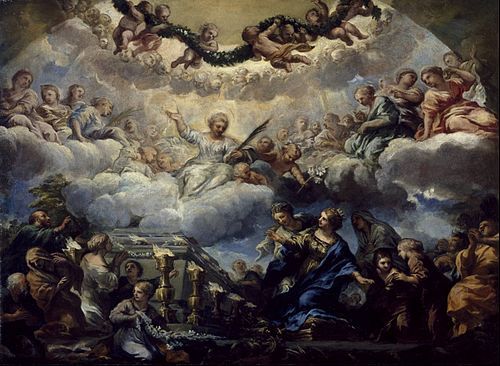
Image by Pietro da Cortona
0 notes
Text
Top 10 Things to do in Krakow, Poland

Krakow is one of the most underrated cities in Europe. But as tourists begin to uncover its unique mix of history and contemporary culture, it’s not going to stay that way for long.
A Krakow city break has long rivalled Warsaw to be the best city in Poland. But while it might have lost out as capital to Warsaw a few hundred years back, Krakow definitely has the best architecture, and arguably the best food and drink in the country.
Explore the cobbled streets of Krakow’s Old Town, gorge on pierogi dumplings and Polish beers, and delve into its sobering World War II history and modern art and culture.
There are a lot of great things to do here on a trip to Poland. Here are our top 10 favourite things to do in Krakow.
Krakow Old Town
Krakow has a long history dating back well into Europe’s medieval era. Despite the relatively recent destruction of World War II, much of the Old Town is remarkably well preserved.
No visit to Krakow is complete without taking a walk through the Old Town, where you’ll find historic buildings, centuries-old churches and the remains of fortresses and gates.
Recognised as one of Poland’s best UNESCO World Heritage Sites, Krakow Old Town is where you’ll find such iconic sights as St Mary’s Basilica, the Barbican Gate, Wawel Castle and the Main Market Square.
Wawel Castle and Wawel Cathedral
Two of the most important places to visit in Krakow are Wawel Castle and Wawel Cathedral.
Part of Krakow’s historic Old Town, these famous buildings are built atop Wawel Hill, from where they have long dominated the rest of the surrounding city.
Wawel Castle dates back to the 13th century and is a beautiful example of medieval Polish architecture. Wawel Cathedral, found within the Wawel Hill complex, is where the Polish kings and queens were crowned through the ages.
Main Market Square
Also found within the historic walls of the Old Town is Krakow’s Main Market Square, which is easily one of the best places to visit in the city.
The square dates back to at least the 13th century, and it’s been the centre of life in Krakow for hundreds of years.
In fact, this is the square in Europe, and it’s still a lively and beautiful place largest surviving medieval to visit. You can enjoy the endless street performances held in the square, take photographs in front of the spectacular skyline, or simply sit back and enjoy a coffee or a beer while the world passes by.
Cloth Hall
One of the best things to do in Krakow is to explore the world-famous Cloth Hall.
Located in the centre of Main Market Square, the Cloth Hall is one of Krakow’s most iconic buildings. This has long been the centre of commerce in the city, dating back centuries. When Krakow was the capital of Poland until the 16th century, it was the largest trading hub in the country.
Today, you can still find a huge number of market stalls and shops inside Cloth Hall, selling traditional goods, artisanal products and souvenirs. On the top floor, you can find a huge museum dedicated to polish artwork through the ages.
MOCAK
If you’re an art lover then you’ll want to take a trip to MOCAK, Krakow’s excellent museum of modern art.
MOCAK, or the Museum of Modern Art in Krakow, is home to the best contemporary works in Poland, with both permanent and temporary exhibitions to explore.
This is one of Krakow’s newest tourist attractions, but it’s found outside the city centre built on an old segment of a factory that was once run by a certain Oskar Schindler during World War II.
Oskar Schindler Enamel Factory
You can visit the remaining parts of the Oskar Schindler Enamel Factory in Krakow, too.
Oskar Schindler was the true-life subject of the renowned Holocaust Drama, Schindler’s List, and the factory depicted in the film is now a museum.
It offers a fascinating insight into the darker days of Krakow’s history, but also an inspiring look at what one individual did to redeem himself in the face of war.
Kazimierz District
To learn more about Krakow’s Jewish history, take a tour through the city’s Kazimierz District.
Once the bustling hub of Jewish culture, the district lay derelict for decades after World War II, but in recent years has seen a dramatic revitalisation. It’s now a UNESCO World Heritage Site and a wonderful hub for art and modern Polish culture in Krakow.
Auschwitz-Birkenau
Just one hour away from Krakow, you can find one of the most infamous places in European history.
Auschwitz-Birkenau needs no introduction, because this is where the worst of the Holocaust was perpetrated.
It’s now a memorial site, and while it’s not exactly the happiest place to visit on holiday, it’s an incredibly important place that attracts millions of visitors every year. Learn about the history and make sure Krakow’s World War II past isn’t forgotten.
Wieliczka Salt Mine
Another unique day trip to make from Krakow is a tour of the Wieliczka Salt Mine. Dating back to around the 13th century, this was once one of the largest salt producers in the world.
Today, it’s an important historical landmark, where you can learn about Poland’s salty history. It’s also a surprisingly beautiful place, with vast underground caverns and an elaborate network of tunnels and mine shafts that can be explored.
Eat Pierogi
Polish food isn’t quite as international as it perhaps should be. However in Krakow, you’ll soon start to wonder why there aren’t more Polish diners elsewhere in the world.
The country’s staple dish is pierogi, a delicious dumpling that’s stuffed with meat, cheese or vegetables, or in some cases all three.
For the most traditional pierogi, then head to a Polish Milkbar, a type of canteen serving cheap, Polish food that became popular during the Communist era.
Contact Baltic Travel Company today to find out more about our great travel itineraries for Krakow and Poland, and to book your next getaway!
Resource URL: - https://www.baltictravelcompany.com/blog/index.php/poland/top-10-things-to-do-in-krakow-poland/
0 notes
Text
Catherine Hokin is interviewed by Elise Cooper
The Secretary by Catherine Hokin is a gripping novel spanning four decades. It has a dual timeline covering Germany during WWII and East Berlin after the war. Throughout the book readers will wonder would they be brave like the two heroines or remain a neutral bystander? Did the heroines take enough action, or should they have done more?
Magda Aderbach became the personal assistant to factory owner Walther Tiedemann, reminding readers of Oskar Schindler who saved Polish-Jewish refugees from the Holocaust. Because of her efficiency Magda impresses Heinrich Himmler, the leader of the SS and architect of the Holocaust, and she volunteers to be his secretary. She leads a dual life, pretending to enjoy hob-nobbing with the powerful Nazis, but also working for the resistance because she hates the Nazis and what they stand for. She smuggles reports, forges documents, arranges fake IDs to smuggle Jews out of Germany, and has organized safe houses for the Jews as well.
Fast forward forty years where Magda now lives in East Berlin, behind the Berlin Wall with her daughter, her husband, and her granddaughter, Nina Dahlke. Both Magda and Nina have similar personality traits, wanting to fight injustice, although the granddaughter is more impulsive and a lot less cautious. Beyond that, Nina does not understand why her grandmother is so secretive about her life in Germany during WWII. She knows there is a house in question, that was once lived in by Magda, but there are secrets involved with that house, and more secrets that Magda has kept to herself. After the Wall falls, Nina takes a journey to West Berlin to find the Tower House, hoping to trace her family’s history in the ruins of the past her grandmother ran from. But, when she finally finds the abandoned house, she finds out who owned the house, and wonders if her grandmother had a dual life, seeing pictures of her with Himmler. To make matters worse, Nina meets Elsa, the former wife of an SS officer, who lies and tries to pin her atrocities on Magda.
What the author does brilliantly is show parallels and similarities between the Nazi regime and the Communists control of East Berlin, the Stasis. As with both regimes there were spies everywhere, no freedom, a life lived under guards and rifles, terrible atrocities, and inhuman behavior where there was oppression, imprisonment, and killings. Readers understand the heroism of Magda and Nina as they were brave enough to stand up to tyranny even if it meant a harsh imprisonment or execution. Once the wall falls, the two worlds of Nina and Magda collide in a major revelation.
This novel is riveting throughout. Readers will not be able to put the book down, wanting to find out how the stories end for both Nina and Magda. The portrayals of these characters who must make impossible choices will keep people on the edge of their seats. A bonus is the history sprinkled throughout the novel.
Elise Cooper: Did you get the idea from The Lost Mother?
Catherine Hokin: This book follows my previous novel, The Lost Mother, since it is still in Germany, this time after WWII. I also spent a lot of time in Berlin. They have a wonderful museum dedicated to the heroes of the silent resistance. What interests me is what happened because of WWII.
EC: What was your experience like when you went to Germany?
CH: I come from a tiny village in England. When I was seventeen, I went there and saw the wall, in about 1979. I never have seen people with machine guns. I spoke with a local woman who told me that her sister lived in East Berlin, and she has not seen her in over twenty years. The wall went up overnight and if someone was caught on the other side that was it. My mind fast-forwarded to this story. There are a lot of flash points for me which I write about in my books.
EC: Did the book have similarities between Communists and the Nazis?
CH: They both were oppressive, used surveillance, and censorship, controlling people’s lives and minds. I did the comparison intentionally. I find it fascinating how in a short period of time society moved from one dictatorship to another. When East Germany was born there was hope behind it, but it turned into something people had fought to get rid of, such as the genocide.
EC: How did you do the research?
CH: I read a huge number of books, spent a lot of time in London’s Holocaust Library, and saw on the Internet people who told their stories. With every book I spent six months of research to understand the nuance.
EC: How would you describe Magda?
CH: She is reliable, steady, impulsive, loyal, brave, and chose to fight injustice. But I do not think she realizes the scale of what was the cost of her involvement. She has a naïve view that she can stand up to the Nazis who she worked with. Magda questions if she did enough? She did arrange escape routes and wrote reports, forging IDs, and had safe houses.
EC: Magda’s saving of Jews-was it based on reality?
CH: Yes. About 6000 Jews survived in hiding in Berlin. People found them a cellar to hide in and had them move around. I even put in a scene where Magda tried to go back out to help more. I wanted to show how the Nazis treated the Jews.
EC: How would you describe Nina?
CH: I felt a kinship with her. I was a lot like her. She felt she did not fit in her world. She fought back although clumsily, putting others at risk. Nina is a feisty character. To write the scenes where she was imprisoned, I spent a lot of time at the Hohenschonhausen Prison in East Berlin, a horrible place. She is spunky, innocent, conflicted, and hot-headed. She did not have choices and control over her life. After the Wall came down, she felt alienated.
EC: What was the role of Elsa in the story?
CH: She is horrible, hard, vicious, dangerous, and cruel, an adversary of Magda. I wrote her to show how someone during those times was immersed in the Nazi life. She loved the lifestyle. Elsa was caught up in the cause and jealous of Magda. Elsa liked being in control of the chess board, pulling people’s strings.
EC: Next books?
CH: This is the third book published by Grand Central in the US. I have written seven books, the seventh one coming out this month in the UK. People can get any of my books in E format in the states. I also write a series where the third book comes out in the UK in January. The series is about a photographer and a Jewish detective, taking place from 1933 to 1963, set in Berlin and Prague. The first two books involve serial killers, taking revenge on what happened to them. The fourth book in the series comes out in May. Each book has crimes that came of WWII.
THANK YOU!!
0 notes
Text
7.07.22
LOST ALL HIS MIRTH
Arrived at Krakow Glowny by bus and slept at the laundrette nearby for a few hours. Let my guard down and joined a pub crawl which travelled to four different venues but I only remember the first. Krakow is cold and grey which made sleeping much easier and also suited the sights I visited. I went and saw the Elvis movie in a quaint cinema with a lovely courtyard where I had a Riesling after the death of the King. Afterwards I met up with a dutchman named Kees and we went to a craft beer bar and had some czech lagers. He was on holiday because he has just gone through a horrible breakup and wanted to get out and clear his mind. He was great company for a night but did he also mentioned he blames women as a gender for his broken heart and wasn’t open to changing this opinion despite my pleas. He was staying in my dorm and said he wanted to come along with me the following day where I had planned to see some museums and go to a gig. We got breakfast late in the day and he was so despondent he barely ate anything and just kind of moped at the other end of the table while I awkwardly tried to table topics of jovial nature unsuccessfully. We went back to the accom and i luckily had to live rooms as my bed was already taken by someone else when I extended my stay. Asking what I was doing now in the hall way I told him I was going to my room being leaving surreptitiously, peering around corners before running out the stairway. I wish that lugubrious Dutchman all the best.

I had plans to walk across town over the Vistula to visit some galleries and when I left my accommodation I was met with pouring rain which I was rather happy about and I was able to borrow a brolly from someone. I went to the Oskar Schindler Enamel Factory which now houses an exhibition named Krakow Under Nazi Rule and the Museum of Contemporary Art which had some artworks I liked including this one of two guys sitting on an couch mimicking each other. I went to an ex factory turn squat that was not far from Schindler’s factory to watch a speed/thrash/black metal gig. Most of the bands were local but a German band also played who were good but a little too 80s thrash revisionist. The band i was most keen to see, Throät Cütter, had pulled out late so I left a little early. On the walk home I came across a public performance at Rynek Główny, the market square, and sat and watched as a 9 piece band played folk style music with a grainy 8mm vision playing on a screen behind of people in long coats walking through a forrest. Some of the band members held suitcases with fairy lights on them and some of them had what looked like dolls in them but I couldn’t tell. All the audience gathered around were holding and waving mini polish flags and I held one too but when it finished I was too tired to talk to anyone about what it was so I left and walked to my room totally ignorant of what the occasion but charmed nonetheless.



0 notes
Photo

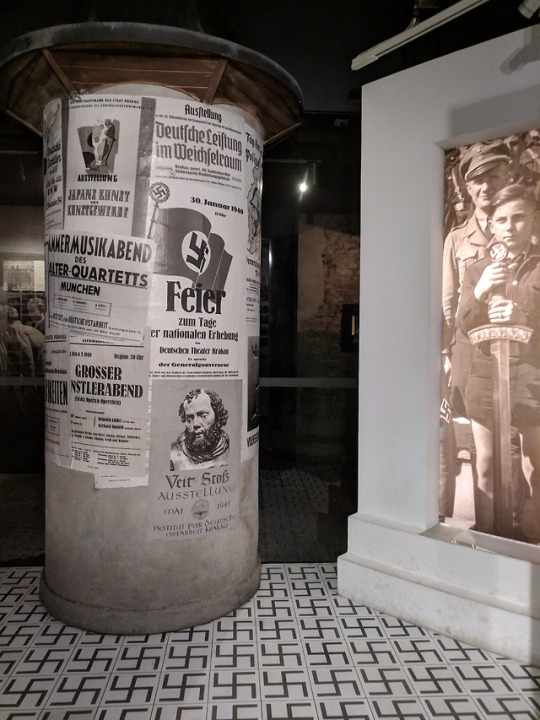



Schindler’s Factory & the old Jewish Quarter
Krakow, Poland ~ November 2018
----------------------------------------------------------------------------------------------------
I’ve never seen the movie ‘Schindler’s List’, however it’s certainly on my to do list now!
The museum was absolutely fascinating and there is so much incredible information in there alongside genuine artefacts.
I think you could spend an entire day there and still not manage to read all of the literature available on the walls and displays.
My favourite parts were the diary/journal entries and letters written by Jewish people (adults and children) during the time of the Nazi take over.
Although difficult to read at times, they’re honest, and give a true insight into the atrocities that took place.
I would certainly recommend a visit to Schindler’s factory if you ever visit Krakow! It’s a short 10-15 minute walk from the main part of town I’d say.
Definitely book in advance too, as the queues are quite long and it’s very busy!
We booked before even landing in Poland and just skipped straight past the queue.
#schindler's list#schindler#oskar schindler#schindler's factory#holocaust#second world war#krakow#poland#jewish quarter#jewish ghetto#history#museum#travel#travel blog#travel and learn#the things I've seen#history museum#travel inspo#tips for travel
14 notes
·
View notes
Photo
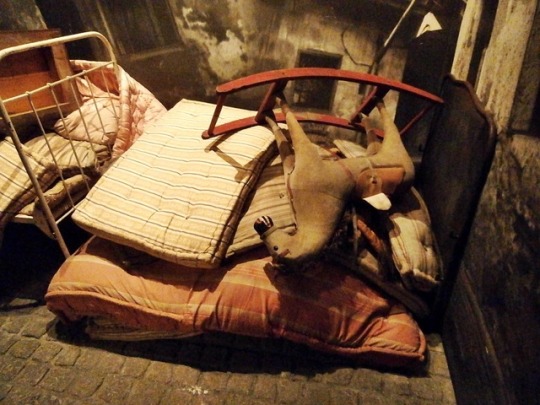





ғᴀʙʀʏᴋᴀ ᴇᴍᴀʟɪᴀ ᴏsᴋᴀʀᴀ sᴄʜɪɴᴅʟᴇʀᴀ, ᴋʀᴀᴋóᴡ, ᴘᴏʟsᴋᴀ
#Poland#Polska#Krakow#Oskar Schindler's Factory#Oskar Schindler's Enamel Factory#Fabryka Emalia Oskara Schindlera#rangerphoto#dark tourism#museum
5 notes
·
View notes
Photo
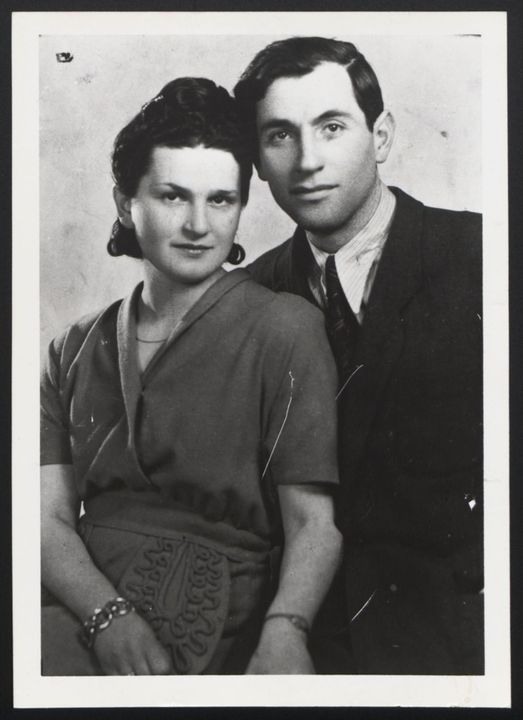
Margot and Chaskel Schlesinger, a Jewish couple, survived the Holocaust with the help of Oskar Schindler and his list.
Born in Berlin, Margot moved with her parents to their hometown of Tarnów, Poland in 1939 when she was 20 years old. As they were Polish citizens, the Nazi regime forced them to leave Germany. Soon after arriving, Margot met Chaskel, and the two became good friends.
Just a few months later, Nazi Germany invaded Poland. In June 1942, deportations began from the Tarnów ghetto. Arriving home one day, Margot discovered that her parents were gone. They had been taken as part of the deportation, and either shot in the nearby forest or deported to Belzec killing center.
Margot went to stay with Chaskel using a false marriage paper. That July, the couple was officially married in secret by a rabbi.
When the ghetto was liquidated in September 1943, Margot and Chaskel were sent to Płaszów labor camp, where Margot was assigned to a work detail in a nearby factory. In October 1944, she was placed on "Schindler's list," ensuring her transfer to Oskar Schindler's new factory in Brünnlitz, along with other Jewish forced laborers. Margot managed to have Chaskel and his brother added to the list as well, ultimately helping save their lives.
Both Margot and Chaskel were liberated in May 1945. After the war, the couple moved to France and had three daughters. The Schlesingers immigrated to the United States in 1953.
Photo: USHMM, gift of Margot Wind Schlesinger
United States Holocaust Memorial Museum
26 notes
·
View notes
Note
Hiii Justine! I'm off to Poland (krakow and Warsaw) in two weeks on holiday. Any insider tips of things I must see, eat or do? (also, please don't be judgemental, we'll be traveling by car and bringing loads of disposable face masks and abiding by the Polish rules and regulations) ✌🏼
wow so i typed for 10 min and then accidentally closed my browser so i had to type it again so sorry this took so long aergfaeswrg
and trust me im soooo far from judging you so no worries.! First you need to know that Krakow is amazing, beautiful and historic and Warsaw is a hole
So in Krakow. You def need to go to main square. Like its always the first place tourist visit and now wonder because its beautiful. And you have lots of stuff there. Practically every brick there is historic hahaha. But for touristy stuff i think my fav there has to be an underground museum. Its really impressive.
Next of course Wawel Castle and our dragon and dragons den. I think its the coolest place in the city actually. Like cmooon not many cities have castles hahah and theres so many museums and stuff to see there so you can just go and pick what you like or you dont have to go really inside and just walk around there because its still amazing.
Then theres a whole Kazimierz district. VERY BEAUTIFUL. and very historic. Also it has lots of charming places to sit and eat.
Then theres Oskar Schindler's Enamel Factory. I know its like THE museum to go here and all tourists always want to see it. And im not blaming them because it is impressive. And next to it you can find my fav museum in the city Mocak, its a museum of contemporary art.
Ohh and you def have to go for a walk to a park thats around main square called Planty because soooooo pretty. Just buy yourself some ice cream and walk around.
Oh and next to Krakow theres a town called Wieliczka and you can find a Salt Mine there and its like a whole thing too... You go underground and there are like amazing things to see there, you hear lots of stories and legends and its all just magical
Oh and not that far from the city you can find Auschwitz. Not gonna lie its not a fun, light experience but oh so worth to see.
Now food and stuff.
So it of course depends on what you want to eat but you def need to try pierogies. There are like 100380340 places around main square and kazimierz district that serve them and all of them are good. They have to be to stay in business.
If you want amazing pizza, theres a pizza place called ‘Cyklop’, its around main square also and its a famous place because they really do have the best pizza/
Ohhh you can also visting this place called ‘Dolne Mlyny’. Its like this whole complex with bars and restaurants and theres so many good stuff there
and if you want something interesting theres a place called ‘alcatraz’ and its a bar/restaurant thats made like a prison hahaha
ohhh and one of the best places to eat here is also place called ‘Kompania Kuflowa’ its near Wawel Castle.
and if you want bars well...theres so many bars everywhere and all of them are good hahah
sorry that was long. but i hope a little helpfull hahah have fun!
6 notes
·
View notes
Text




2019.10.22 tue
Day 11 of 100 👀
Hi there dear stranger ❤
Day 3 ▪Poland Trip 🇵🇱
06:40 woke up and got ready
07:00 breakfast
08:00 got on the bus
10:00 Auschwitz
13:30 Birkenau
14:30 leaving
16:00 free time - lunch
17:00 Oskar Schindler's Factory Museum
18:30 leaving
19:00 free time
We went to Auschwitz, Birkenau and the Schindler museum, so today was, well quite traumatizing.
🎧 Johnny Cash - Man In Black
#100 days of productivity#100dop#studyblr#dn'a studies#school trip#world war two#travel#auschwitz#birkenau#mine#oskar schindler#schindler's list#poland#historical places#history
16 notes
·
View notes
Photo
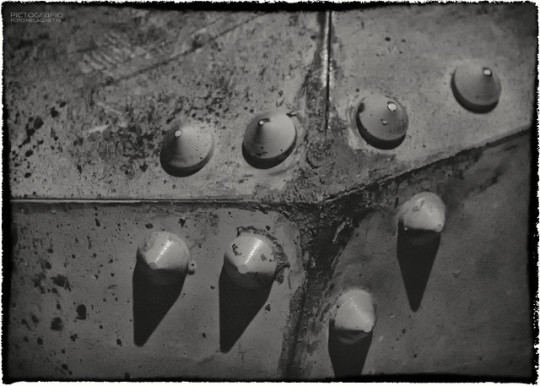
Detail of tankette armor #1
Detail of TKS tankette armor.
Oskar Schindler's Factory Museum in Kraków, Poland.
#metal#museum#Kraków#Cracow#Lesser Poland#Poland#Małopolska#armor#tank#military#heritage#Schindler's Factory
10 notes
·
View notes
Link
Gratitude—hakarat hatov—is a cardinal Jewish precept. The first words that many Jews recite each morning are the prayer, Modeh Ani (“I thank”). So one might expect Jews to revere someone who rescued thousands of their brethren during the Holocaust. But while Jews honor heroes like Oskar Schindler and Raoul Wallenberg, the name of Carl Lutz (1895-1975) is virtually unknown.
Charlotte Schallié, a German professor at the University of Victoria, British Columbia, Canada, and Agnes Hirschi, Carl Lutz’s stepdaughter, aim to rectify Lutz’s obscurity with their insightful book, Under Swiss Protection: Jewish Eyewitness Accounts from Wartime Budapest, originally published in German.
Lutz, the Swiss Vice Consul in Hungary during the Nazi occupation, rescued Hirschi, along with her mother, Magda. In 1949, Lutz divorced his first wife and married Magda.
Schallié and Hirschi undertook the monumental task of interviewing 36 survivors around the world—almost half in Israel and one-fourth in the United States—who were rescued by Carl Lutz...
In selecting 36 subjects, the editors were unaware of a striking coincidence: Chai, the Hebrew letters that represent the number eighteen, means “life,” and 36 equals “double chai.”
The son of a stonemason, who died when Carl was fourteen, Lutz displayed remarkable initiative. In 1913, at age 18, he left Switzerland and immigrated to the United States by himself. To earn money for college, he worked in a factory, an office and eventually, at the Swiss Legation in Washington, DC. In 1924, he graduated from George Washington University with a B.A. in law and history.
The Swiss legate recommended Lutz to the ministry in Bern. Following several assignments in the United States, Lutz was posted to Palestine in 1935. While there, he witnessed the lynching of an unarmed Jewish worker by an Arab mob. Lutz felt powerless to intervene, for fear of being lynched himself. This brutal attack helped crystalize his empathy for the Jewish victims of genocide in Europe.
Carl Lutz was promoted to vice-consul in Budapest in 1942-1944. In that capacity, he displayed the same resourcefulness as in his teenage years.
In one interview, survivor Alexander Schlesinger relates how he was conscripted for a labor brigade, digging ditches. Being without food for several days, he and a friend dug up a few carrots from a field. The Nazi soldiers overseeing the brigade seized them for “stealing” and ordered them to dig their own graves. Miraculously, Carl Lutz arrived in a car bearing the insignia of the Swiss flag and saved them from imminent death.
To implement his rescue operation, Lutz placed the Hungarian branch of the Jewish Agency under Swiss protection. He also created “safe houses.” The Glass House, headquarters of 76 Swiss safe houses established by Lutz, was a converted glass factory in Budapest. It became an annex of the Swiss Embassy and a center for producing forged documents. At one time, it housed 25,000 Jews. It is now a museum.
Many survivors interviewed for the book mention the Schutzpasse (safe conduct passes) that Lutz devised for the persecuted Jews. He applied for 8,000 passes, but circumvented that limit by treating them as passes for families, rather than individuals, and by repeatedly reissuing new passes, always numbered between 1 and 8,000.
These techniques enabled Lutz to provide Schutzpasse to at least 62,000 Jews. This figure—the largest and most successful rescue operation of Jews during World War II—roughly equals the population of Utica, New York, Daytona Beach, Florida or Nazareth, Israel.
Oskar Schindler, by contrast, rescued two percent of that total, or 1,200 Jews...
Charlotte Schallié explains that Lutz remains largely unrecognized, even today, because of his unassuming nature. He maintained such a low profile that most of those whom he rescued never saw him or heard his name. Paul Fabry, a member of the Resistance, points out, “It was actually the luck of the whole movement that Lutz was not known…If Lutz had been as well known as…Wallenberg, he would have been arrested and taken away in the same fashion.”
Yet Lutz’ anonymity has a more sinister aspect, discussed in a biography by Theo Tschuy. After the war, instead of bestowing some recognition for Lutz’ valiant sacrifice, the Swiss government subjected him to a judicial investigation and a reprimand for exceeding his authority in his rescue efforts. This treatment deeply hurt Lutz, economically as well as emotionally.
...For almost 50 years, Switzerland suppressed any acknowledgement of Lutz’ noble deeds. Despite this travesty, the Swiss Parliament recognized Lutz in 1957. In 1995, Switzerland apologized for its decades of neglect. But for Lutz, the apology arrived 20 years too late; he had died in 1975.
In 1964, Yad Vashem cited Lutz as one of its first Righteous Among the Nations. He was also nominated three times for the Nobel Peace Prize.
Lutz epitomizes the teachings from Pirkeh Avos (Ethics of the Fathers): “Emor me’at ve’aseh harbeh” (“Say little and do much”) and “He who saves a single life, saves the world entire.” With their moving portrayals, Schallié and Hirschi demonstrate that Carl Lutz accomplished more, with less fanfare, than any other Holocaust rescuer...
#holocaust#carl lutz#righteous gentiles#switzerland#he got investigated for saving too many jews#amazing
22 notes
·
View notes
Text
Oskar Schindler

Oskar Schindler, born on April 28, 1908 in Zwittau, in the far west of Moravia and died on October 9, 1974 in Hildesheim, Germany. He was a German industrialist who saved 1,200 Jews during the Shoah by having them work in its factories located respectively in the General Government of Poland and in the Protectorate of Bohemia-Moravia.
You can visit a museum in Krakow about Oskar Schindler and his factory in Krakow, Poland.
He was honored with the title of "Just Among the Nations," by the Yad Vashem Memorial, on July 18, 1967.
His life was the subject of a Thomas Keneally novel (The Schindler List) in 1982 and of a film (of the same name) by Steven Spielberg in 1993. He is buried at the Mount Zion Christian Cemetery in Jerusalem.
#oskar schindler#krakow#factory#poland#the Schindler list#steven spielberg#tom hanks#cracovie#krakau
10 notes
·
View notes